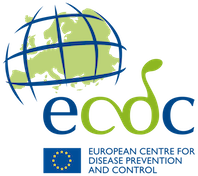Reproducibility of serology assays for influenza A(H1N1)2009pdmArchived
The rationale for the study described in this paper is the need to improve standardisation of the bioassays to evaluate the immunogenicity of influenza A(H1N1)2009pdm vaccines, namely haemagglutination-inhibition (HI) and virus neutralisation (VN), so as to minimise current inter-laboratory variation. In order to do this, a candidate International Standard (IS) for antibody to influenza A(H1N1)2009pdm virus (09/194) was prepared from pooled sera of subjects who had either recovered from influenza A(H1N1)2009pdm infection or who had been immunised with an adjuvanted subunit vaccine prepared from a reassortant virus (NYMC X-179A) derived from the 2009 pandemic A/California/7/2009 virus.
Reproducibility of serology assays for pandemic influenza H1N1: Collaborative study to evaluate a candidate WHO International StandardWood JM, Major D, Heath A, et al.Vaccine 30 (2012) 210– 217; 17 November 2011
The rationale for the study described in this paper is the need to improve standardisation of the bioassays to evaluate the immunogenicity of influenza A(H1N1)2009pdm vaccines, namely haemagglutination-inhibition (HI) and virus neutralisation (VN), so as to minimise current inter-laboratory variation. In order to do this, a candidate International Standard (IS) for antibody to influenza A(H1N1)2009pdm virus (09/194) was prepared from pooled sera of subjects who had either recovered from influenza A(H1N1)2009pdm infection or who had been immunised with an adjuvanted subunit vaccine prepared from a reassortant virus (NYMC X-179A) derived from the 2009 pandemic A/California/7/2009 virus.
Ten laboratories from seven countries tested the candidate IS-09/194 and a panel of human sera by HI and VN using the A/California/7/2009 virus (six of the ten laboratories) and/or the reassortant virus NYMC X-179A (all ten laboratories). The results indicate that the inter-laboratory variability for HI and VN assay results was high. For results of antibody tests to NYMC X-179A, the % geometric coefficient of variation (%GCV) for 09/194 between laboratories was 83% for HI and 192% for VN. For tests of all sera, the median %GCV ranged from 95 to 345% for HI (80-fold variation) and 204 to 383% for VN (109-fold variation), but for the titres relative to 09/194 the median %GCV was much reduced (HI 34–231%; VN 44-214%). For tests of antibody to the A/California/7/2009 wild type virus there were similar reductions in %GCV when 09/194 was used.
These results suggest that the candidate International Standard (IS) 09/194 will be of use to standardise assays of antibody to A/California/7/2009 vaccine. Standard 09/194 has now been established by the World Health Organization (WHO) as an International Standard for antibody to A/California/7/2009 with an assigned potency of 1300 IU per ml.(1)
ECDC Comment, 19 April 2012:
Serology and seroepidemiology are invaluable tools for pandemic preparedness for assessment of population risk and response during an influenza pandemic.(2,3) However, poor reproducibility and inter-laboratory comparability of influenza serology results from HI and VN assays, has undermined the serological work such as the results published from the 2009 pandemic. For example the ability to estimate the proportion of asymptomatic infections was greatly hampered. Likewise, the comparability of studies in different age groups between laboratories is also hampered. However the reproducibility and comparability of results within same laboratory is good and therefore comparability such as of age group results from same study is valid, where testing has been done in one laboratory.
The study of Wood et al has shown a standard can reduce the inter-laboratory variability of the results and bring coherence to the inter-assay results as well. Both HI and VN are complex tests and even with a test standard, several parameters remain to be standardised between laboratory protocols. It is obvious that all of these cannot be standardised as different laboratories have access to different sources of reagents and different level of funding for the reagents and equipment. Therefore it is of outmost importance that all that can be done for the standardisation, is done. One valuable suggestion by Wood et al. is to agree on how the starting dilution in VN is expressed: VN starting dilutions should be expressed as serum dilution before addition of virus as is common practice for HI assays.(1) The possibility of unifying protocols even more e.g. by not using the long incubation times before CPE read-out but to use overnight incubation with ELISA readout, would probably bring the inter-laboratory results even closer to each other.
In an international ECDC-hosted 2nd global influenza seroepidemiology meeting in December 2011 in Stockholm, it was agreed to set-up laboratory working group to further compare different serology assay protocols between laboratories and to compare the results with the use of the Wood et al. 09/194 A(H1N1)pdm09 antibody standard. The group also agreed on the expression of the VN starting dilution and ruled out the use of several day incubation times for VN. Two main serology protocols will be evaluated side-by-side: 2d VN with ELISA as read-out (WHO protocol) and 3d HI (consensus assay). It was also agreed to test neuraminidase inhibition test in several laboratories as a new method.






